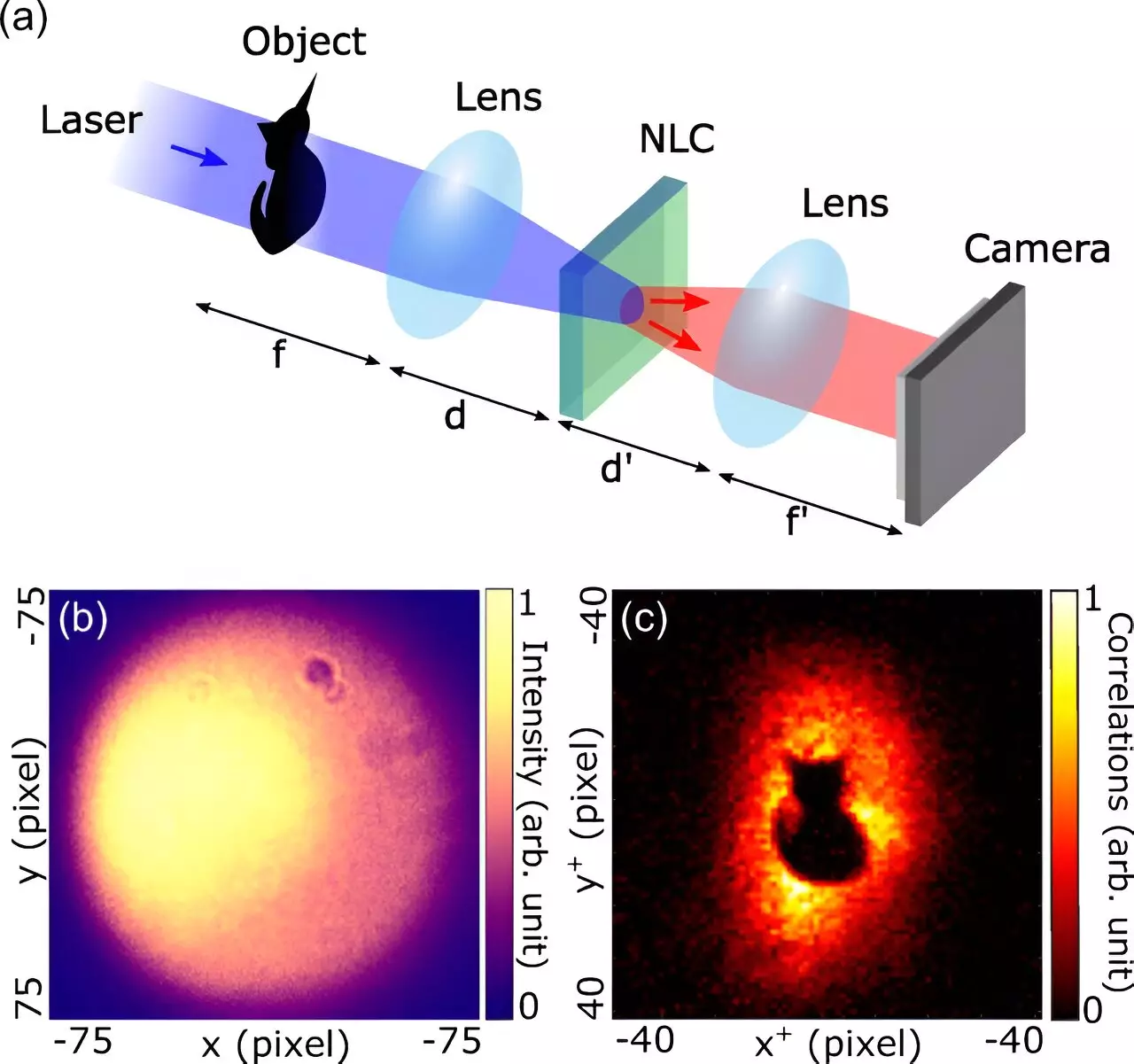Recent advancements in quantum imaging have opened up new avenues for both practical applications and theoretical exploration. A fascinating new method developed by researchers at the Paris Institute of Nanoscience, affiliated with Sorbonne University, demonstrates how to encode information in the quantum correlations of entangled photon pairs. Published in the renowned journal Physical Review Letters, this study showcases the innovative uses of photon entanglement in areas such as quantum computing and cryptography. However, the implication of such technologies stretches beyond mere functionality; they also challenge our conventional understanding of what constitutes an image.
Photon entanglement is a cornerstone of quantum mechanics and plays a fundamental role in emerging technologies like optical quantum computing. In this new technique, the researchers harness the phenomenon of spontaneous parametric down-conversion (SPDC), wherein a high-energy blue laser activates a nonlinear crystal, thereby creating pairs of lower-energy infrared photons. What sets this method apart is not just the creation of entangled pairs but the sophisticated manner in which they are manipulated for imaging purposes.
The practical implication lies in the fine-tuning of the spatial characteristics of the pumping laser to induce specific quantum correlations in the emitted photon pairs. This level of control is increasingly necessary as quantum applications evolve, demanding precision in the properties of the photons used.
At the heart of the study lies an experimental design that integrates a conventional two-lens imaging system with SPDC. The experiment begins by placing the object to be viewed in the object plane of a lens, which is strategically positioned before the crystal. A second lens captures the light to project an image onto a camera system. In a typical setup, one would expect to see a direct image of the object. However, the introduction of the crystal alters the expected outcome dramatically.
Instead of producing a visible representation, the resultant image appears uniform, devoid of any recognizable details, while spectral filtering selects only the entangled photon pairs. This phenomenon raises intriguing questions about the nature of visible information and challenges traditional imaging paradigms. The secret to revealing the encoded image lies in assessing the spatial correlations between the detected photon pairs after an extensive accumulation process.
The extraction of meaningful imagery from these quantum correlations involves sophisticated techniques and specialized equipment. To construct a visible image, detectors must be able to recognize single photons as they arrive in tandem with their entangled counterparts. What emerges is a representation that can only be unearthed by analyzing the spatial distribution of photon coincidences—an innovative approach that relies on unique algorithms and a highly sensitive detection system.
As the lead author of the study, Chloé Vernière, aptly points out, traditional methods fail to deliver information when photons are counted individually. However, a focused approach on their simultaneous arrivals reveals complex patterns inherent in the correlations. This duality exemplifies the profound shift in understanding the behavior of light and introduces a novel framework for how imaging is conceptualized in a quantum context.
The ramifications of this groundbreaking study extend far beyond theoretical curiosities. The versatility of encoding information into photon pairs presents significant implications for applications in fields such as quantum communication and cryptography. The ability to encode multiple images within the same photon beam, retrievable by transitioning between various optical planes, could revolutionize how we transmit and secure data.
Both Vernière and her advisor Hugo Defienne stress the long-overlooked potential of exploiting spatial correlations as a medium for image reconstruction. They envision new systems of cryptography and imaging techniques that capitalize on this knowledge, drawing on the inherent complexities of quantum correlations.
This research highlights the evolving landscape of quantum imaging and unveils the potential for technologies that were once deemed the realm of science fiction. As researchers further explore and refine these quantum methodologies, the foundational ways we understand and interact with light may very well transform, leading to unprecedented opportunities across multiple scientific domains.


Leave a Reply